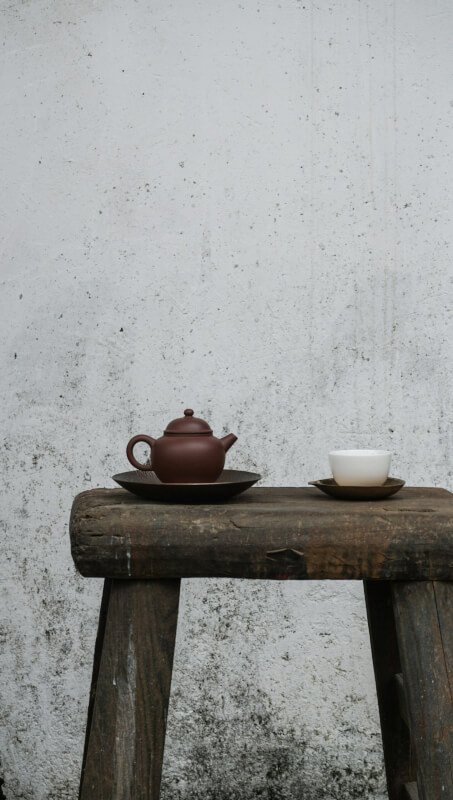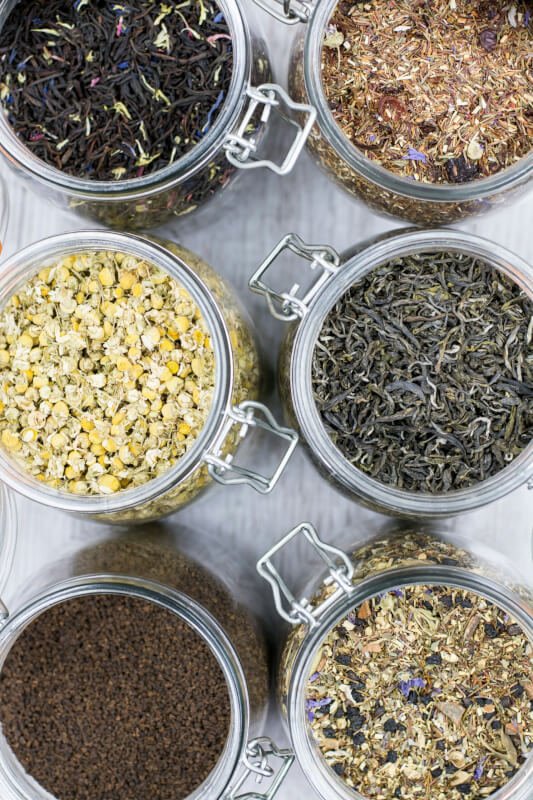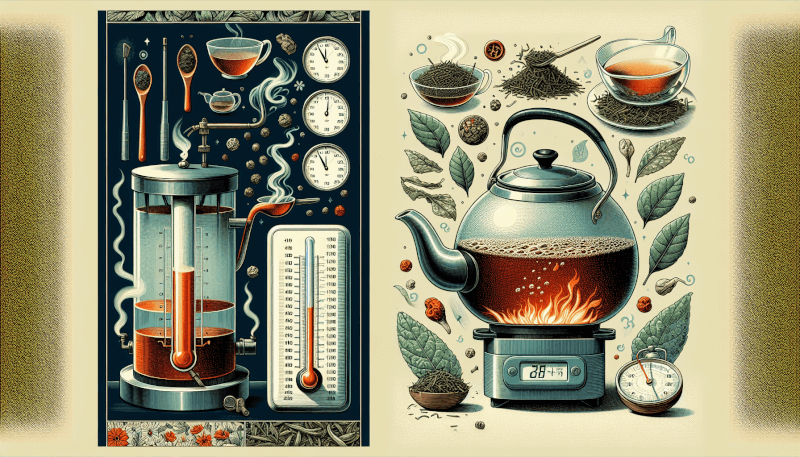In this article, you will discover the secrets to becoming a true tea connoisseur by mastering the art of combining tea brewing methods. Whether you prefer a traditional steeping process, the convenience of a tea bag, or the rich flavors of a tea concentrate, this guide will show you how to seamlessly merge these techniques to create the perfect cup of tea. Say goodbye to settling for just one method and prepare to elevate your tea-drinking experience to new heights. Get ready to embark on a journey of exploration and innovation as you unlock the endless possibilities of combining tea brewing methods.

Introduction
Welcome to the world of tea! In this article, we will explore the art of combining tea brewing methods to create unique and flavorful blends. Whether you’re a tea enthusiast or just starting your tea journey, understanding the different brewing techniques and their impact on flavor is essential. We will delve into the various types of tea, factors affecting brewing, and how to enhance your tea experience through experimentation and cultural practices. So grab a cup of your favorite tea and let’s dive in!
Understanding Tea Brewing Methods
Before we dive into combining tea brewing methods, it’s important to have a good grasp of the basics. Let’s start by exploring the different types of tea available and how they differ in terms of flavor and brewing techniques. Understanding these factors will set the foundation for your blending adventures.
Exploring Different Types of Tea
Tea comes in various types, each with its own unique flavors and characteristics. From the robust and bold flavors of black tea to the delicate and grassy notes of green tea, there is a tea to suit every palate. Some of the most common types of tea include black tea, green tea, oolong tea, white tea, and herbal tea. Each type has its own distinct brewing methods, so let’s take a closer look at how to brew these teas to perfection.
Understanding Brewing Techniques for Different Teas
When it comes to brewing tea, the right technique can make all the difference in the flavor and aroma of your cup. Different teas require different brewing methods to bring out their best qualities. For example, black tea is typically brewed with boiling water for a longer duration to extract its full-bodied flavor, while green tea benefits from cooler water and shorter steeping times to preserve its delicate taste. Oolong tea falls somewhere in between, with more nuanced brewing techniques. Understanding these nuances will help you make the most of your tea brewing experience.
Factors Affecting Tea Brewing
Several factors can affect the taste and quality of your brewed tea. These include the water temperature, steeping time, tea-to-water ratio, and the quality of the tea leaves. The water temperature plays a crucial role in extracting the flavors from the tea leaves. Steeping time determines the strength of the tea, while the tea-to-water ratio influences the concentration of flavors. Lastly, using high-quality tea leaves ensures a more satisfying and flavorful cup of tea. By paying attention to these factors, you can achieve a perfectly brewed cup of tea every time.
Brewing Methods for Different Types of Tea
Now that we have a solid understanding of tea brewing basics, let’s delve into the specific brewing methods for different types of tea. Each tea requires a specific approach to bring out its unique flavors and characteristics.
Black Tea Brewing Methods
Black tea is known for its robust and full-bodied flavors. To brew black tea, start by heating water to a rolling boil. Measure approximately one teaspoon of black tea leaves per cup and place them in a teapot or infuser. Add the boiling water and let it steep for around 3-5 minutes, depending on your preference for strength. Once steeped, strain the tea and pour into cups. You can enjoy it plain or with a touch of milk and sweetener to enhance the flavors.
Green Tea Brewing Methods
Green tea is prized for its refreshing and delicate flavors. Unlike black tea, green tea requires cooler water and shorter steeping times to avoid bitterness. Heat water to around 175°F (80°C) and measure one teaspoon of green tea leaves per cup. Place the tea leaves in a teapot or infuser and pour in the hot water. Let it steep for 1-3 minutes, depending on your desired strength. Strain the tea and savor the delicate flavors of green tea.
Oolong Tea Brewing Methods
Oolong tea lies somewhere between black and green tea in terms of flavor and brewing techniques. For oolong tea, use water heated to approximately 190-200°F (87-93°C). Measure one teaspoon of oolong tea leaves per cup and place them in a teapot or infuser. Pour the hot water over the leaves and let it steep for 3-5 minutes, adjusting the steeping time based on your preference. Strain the tea and indulge in the complex and aromatic flavors of oolong tea.
White Tea Brewing Methods
White tea is known for its delicate and subtle flavors. To brew white tea, heat water to around 175°F (80°C) – similar to green tea. Measure one teaspoon of white tea leaves per cup and place them in a teapot or infuser. Pour the hot water over the leaves and let it steep for 4-6 minutes, allowing the flavors to gently infuse. Strain the tea and embrace the light and nuanced taste of white tea.
Herbal Tea Brewing Methods
Herbal teas, also known as tisanes, open up a world of flavors beyond traditional tea leaves. From chamomile to peppermint, herbal teas offer a wide array of tastes and health benefits. When brewing herbal tea, use boiling water and steep for 5-7 minutes, depending on the specific herb or blend. As herbal teas can be caffeine-free, they make a perfect choice for a soothing and relaxing drink any time of the day.
Combining Tea Brewing Methods
Now that we have explored the individual brewing methods for different types of tea, let’s dive into the exciting world of combining tea brewing methods. By blending different teas and brewing techniques, you can create unique flavor profiles that suit your taste preferences.
Benefits of Combining Tea Brewing Methods
Combining tea brewing methods offers a multitude of benefits. First and foremost, it allows you to experiment and create blends tailored to your preferences. By combining different teas, you can achieve a harmonious balance of flavors, adding depth and complexity to your cup. Additionally, combining brewing methods enables you to highlight specific nuances and characteristics of different teas, resulting in a truly personalized and enjoyable tea experience.
Tips for Combining Tea Brewing Methods
When it comes to combining tea brewing methods, the possibilities are endless. Here are a few tips to help you get started:
Start with complementary flavors: Experiment with teas that have complementary flavors to create harmonious blends. For example, combine a black tea with a hint of citrus with a floral green tea for a refreshing and vibrant blend.
Adjust brewing times: Since different teas have varying steeping times, consider this when blending. Steep the teas separately according to their optimal brewing times, and then mix them in the desired proportions.
Consider the tea-to-water ratio: To achieve the perfect balance of flavors, pay attention to the tea-to-water ratio. Adjust the proportions of each tea according to their strengths and the desired intensity of the blend.
Experiment and have fun: The beauty of tea blending lies in its versatility and endless possibilities. Don’t be afraid to try new combinations and experiment with different brewing techniques. Let your taste buds be your guide and enjoy the process of creating your own unique tea blends.

Creating Your Own Tea Blends
Once you have a good understanding of tea brewing methods and have experimented with combining teas, you can take your tea journey to the next level by creating your own tea blends. This allows you to fine-tune flavors and create teas that are perfectly suited to your taste preferences.
Understanding Flavor Profiles
When creating tea blends, it’s important to understand the flavor profiles of different teas. Some teas may have earthy notes, while others may be floral or fruity. By exploring the characteristics of individual teas, you can create blends that bring out and balance specific flavors.
Experimenting with Different Combinations
Creating tea blends is all about experimentation and discovering new flavor combinations. Start by selecting a base tea that forms the foundation of your blend. Then, add other teas or ingredients that complement and enhance the base tea’s flavors. For example, you could combine a black tea base with a touch of oolong tea and a sprinkle of dried flowers for a unique and aromatic blend.
Balancing the Proportions
When blending teas, it’s important to find the right balance of flavors. Begin by blending small quantities of each tea and adjusting the proportions until you achieve the desired taste. Take note of the ratios and proportions that work well together so that you can recreate your favorite blends in the future.
Synergistic Tea Brewing Techniques
Now that you’ve mastered the art of combining tea brewing methods and created your own blends, let’s explore some synergistic tea brewing techniques. These techniques involve combining different brewing methods to elevate the flavors of the teas and create a truly extraordinary tea experience.
Cold Brew + Hot Brew
One popular combination is the cold brew and hot brew technique. Cold brewing involves steeping the tea leaves in cool water for an extended period, typically overnight. This method results in a smoother and less astringent brew. After cold brewing, you can combine the cold brew with a hot brew of the same tea to add depth and complexity to the flavor. This combination brings out the best of both worlds, resulting in a refreshing yet robust cup of tea.
Gongfu Style + Western Style
The gongfu style and western style brewing methods originate from different tea cultures but can be combined to create a unique brewing experience. Gongfu style involves using smaller tea vessels, higher leaf-to-water ratios, and shorter steeping times to bring out the concentrated flavors of the tea. Western style brewing, on the other hand, utilizes larger pots, longer steeping times, and less tea leaves. By combining these two methods, you can enjoy the rich and intense flavors of gongfu style brewing while still savoring the convenience of larger tea pots.
Matcha + Traditional Brewing
Matcha, a powdered green tea, is traditionally prepared by whisking the tea powder with hot water. This method creates a frothy and vibrant cup of tea. However, you can also combine matcha with traditional brewing techniques for a unique twist. For example, brewing a high-quality green tea and adding a small amount of matcha powder can enhance the tea’s color, flavor, and health benefits. This combination brings together the distinct characteristics of matcha and traditional brewed green tea.
Infusions + Decoctions
Infusions and decoctions are distinct brewing methods used for herbal teas and medicinal blends. Infusions involve steeping herbs or plant materials in hot water to extract their flavors, while decoctions involve simmering the ingredients for a more concentrated brew. By combining these techniques, you can create complex herbal blends with layered flavors. Start by infusing the herbs in hot water and then proceed to simmer the mixture for a short period to extract the beneficial compounds. This combination ensures a well-rounded and potent herbal infusion.

Pairing Tea Brewing Methods with Food
Tea can beautifully complement different types of food, enhancing the taste experience. By carefully selecting and pairing tea flavors with specific dishes, you can create harmonious flavor combinations and elevate your culinary adventures.
Matching Tea Flavors with Food
When it comes to pairing tea with food, consider the flavors and characteristics of both the tea and the dish. For example, a robust black tea pairs well with savory dishes like grilled meats or spicy foods, as its bold flavors can stand up to strong flavors. On the other hand, delicate green or white teas complement lighter dishes such as seafood or salads, as they won’t overpower the subtle flavors.
Enhancing the Taste Experience
Pairing tea with food not only adds a new dimension to your meal but also enhances the taste experience. The tannins in tea can help cleanse the palate after rich or fatty foods, preparing it for the next bite. Additionally, the flavors in tea can interact with the flavors of the food, intensifying certain tastes and bringing out hidden nuances. Pay attention to the aromas, textures, and flavors of both the tea and the food to create a harmonious and memorable dining experience.
Exploring Cultural Tea Blending Practices
Tea blending is deeply rooted in various cultures around the world. Let’s take a brief journey to explore the tea blending practices of different countries.
Chinese Tea Blending
In China, tea blending has been practiced for centuries. Chinese teas are often blended to achieve specific flavor profiles and to create unique combinations. One famous example is the traditional jasmine tea, where green tea leaves are infused with the fragrant aroma of jasmine flowers. Chinese tea blending is steeped in tradition and craftsmanship, resulting in a rich and diverse tea culture.
Japanese Tea Blending
In Japan, tea blending has a different focus. Matcha, the powdered green tea used in traditional tea ceremonies, is carefully blended to achieve a balance of flavor, color, and aroma. Different grades of matcha are combined to create the perfect blend for each occasion. The art of tea blending in Japan is approached with precision and attention to detail, resulting in exquisite and harmonious flavors.
English Tea Blending
Tea blending also has a prominent place in English tea culture. English breakfast tea, a popular blend, typically consists of a mixture of black teas from various regions. The blend creates a balanced and robust cup of tea, perfect for enjoying with milk and sugar. English tea blending focuses on creating a consistent and satisfying blend that appeals to a wide audience.
Indian Tea Blending
India, known for its rich tea heritage, also embraces tea blending. Masala chai, a popular spiced tea blend, combines black tea with various spices such as cinnamon, cardamom, ginger, and cloves. This blend creates a warm and aromatic cup of tea that is enjoyed throughout the country. Indian tea blending celebrates the bold and flavorful tastes of indigenous spices, creating a truly unique tea experience.

Innovative Tea Brewing Techniques
Tea brewing is a craft that continually evolves, and tea enthusiasts are always inventing new and innovative techniques. Let’s explore some cutting-edge tea brewing methods that have emerged in recent years.
Sous Vide Tea Infusion
Sous vide, a cooking technique that involves cooking food in a precisely controlled water bath, has found its way into tea brewing. Sous vide tea infusions involve placing a sealed bag of tea and water into a temperature-controlled water bath for an extended period. This method allows for precise control over water temperature and steeping time, resulting in a perfectly brewed cup of tea with enhanced flavors and minimal bitterness.
Nitro Cold Brewed Teas
Inspired by the popularity of nitro cold brew coffee, tea enthusiasts have adopted this technique for tea as well. Nitro cold brewed teas involve infusing tea leaves with cold water and nitrogen gas, resulting in a smooth and creamy texture. The nitrogen bubbles add a subtle sweetness and unique mouthfeel to the tea. Nitro cold brewed teas offer a refreshing alternative to traditional hot or iced teas and have gained popularity for their smooth and velvety texture.
Tea Smoke Infusion
Tea smoke infusion is a creative technique that infuses the smoky flavors of tea into food and beverages. It involves smoking or infusing food with the aromatic smoke of tea leaves or tea-infused liquids. This method can be used to infuse flavors into meat, fish, cocktails, and even desserts. Tea smoke infusion adds a unique and tantalizing smoky dimension to your culinary creations.
Final Thoughts
Combining tea brewing methods is an exciting journey that allows you to explore the vast world of teas and create blends that suit your taste preferences perfectly. By understanding the different types of tea, brewing techniques, and experimenting with flavor combinations, you can unlock a whole new world of tea enjoyment. Remember to have fun, be open to new experiences, and let your taste buds guide you in your tea blending adventures. So go ahead, explore, create, and savor the delightful flavors that tea has to offer!



